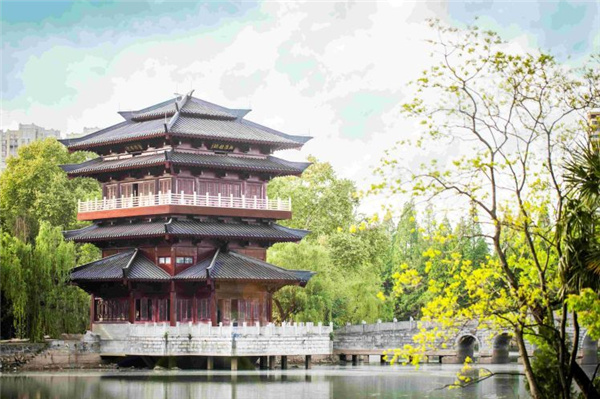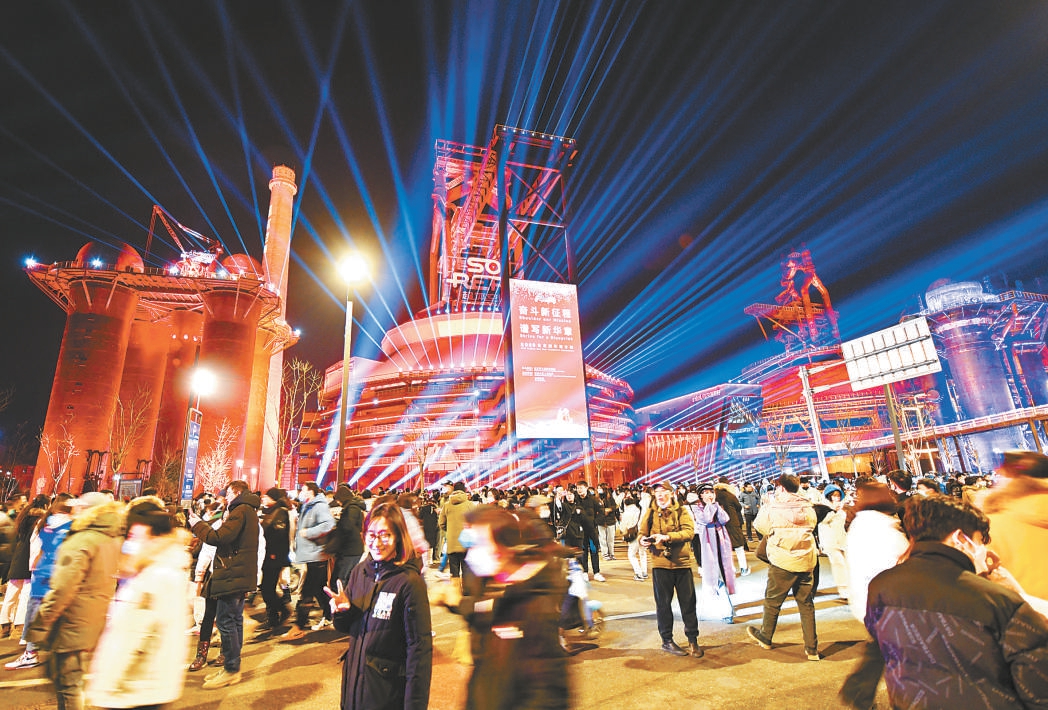哥本哈根屋顶绿化政策将推动城市向绿色城市转变
2012-05-14 10:04:07 作者:多拉茜-罗摩 来源:《风景园林》杂志 浏览次数:
参考文献:
[1]伦敦设计.活着的屋顶和墙体技术报告:支持伦敦规划政策[M].伦敦:大伦敦政府,2008.
[2]史蒂芬 布赫内森.城市野生物空间:瑞士屋顶绿化作为生境的设计案例[J].城市生境,2006,4.
作者简介:
多拉茜 罗摩/生物学家/专注于研究环境的水问题(如湖泊和溪流)/丹麦哥本哈根淡水系统的维护的发起人/哥本哈根废水处理规划的项目经理
译者简介:
蒋巧璐/四川大学景观建筑设计本科生/风景园林新青年志愿者
邓巧/新西兰林肯大学风景园林本科生/风景园林新青年志愿者
1 Introduction
This article will shortly describe the potential of green roofs with focus on reduction of UHIE, rainwater retention, supporting biodiversity and creating greener cities. As an illustration of the idea of future city development, a green roof project from Copenhagen composing of tree connecting green roofs which are accessible for the public will be described. The way Copenhagen has chosen to bring green roofs in future planning will be covered in the last part(Fig.01).
Imagine: "If buildings sprang up suddenly out of the ground like mushrooms, their rooftops would be covered with a layer of soil and plants" (Verlyn Klinkenborg 2009).
I think that's framing the idea about green roofs and that we and the society would benefit from a transformation of the grey cities to green cities by bringing nature back to town. And I believe we can do that by rethinking the way we develop our cities.
But why should we, isn't the way we have built and developed our cities smart enough?
Many cities have experienced in the last decades and city storm drains can't handle more intense rain that we get as part of climate change. This is because when we have developed our cities, the natural land cover has been replaced by concrete and asphalt. Roads, parking lots and buildings are built with impervious surfaces that can not store rainwater and just let it flow as quickly as possible into the storm drains. Therefore, the capacity of drains are used up.
But if we choose to develop our cities with a green roof infrastructure,and look at it on a macro scale, it can reduce the pressure on our sewer system because green roofs act the way as meadow does, absorbing water, filtering it, slowing it down, even storing some of it for later use and if it rains for long time or we have more intense rains, green roofs provide an important delay mechanism on our systems①-③. This effect of green roofs can release some capacity in the sewer and by that we can save infrastructure cost which can be needed for building bigger stormwater systems. Therefore, green roofs have become a part of Portland stormwater management④ as well as they are part of a worldwide growing effort to adapt our cities to climate change and mitigate the negative impact of climate change.
When green roofs absorb rainwater, we use rainwater as the living resource because when we create green roofs we are at the same time creating a living system that provides habitats to support wildlife. Habitats provide food and places for wildlife to live in or migrate though. Developing green roofs with a main purpose to support biodiversity is a matter of choices in the design concept of green roofs. This is about choosing the right substrate, thickness of the substrate and plants⑤.
A conventional city is composed of many dark surfaces which absorb and trap the heat to creat urban heat island effect. But green roofs plants bring nature back to town and can reduce the UHIE②due to the evapotranspiration and shade effect. One very famous case study is the one on Chicago City hall where it was documented that the green roof reduced the temperature on the roof with about 30 celcius⑥. Other studies documented that if cities like New York had half of their flat roofs covered with green roofs the temperature in the city would be reduced with 0.8 degrees Celsius⑦. A team from Ryerson University in 2004 prepared a study on the potential environmental benefits of widespread implementation of green roofs to the City of Toronto. The study calculated an estimated city-wide temperature reduction of 2 degrees Celsius in summer months if only 8% of Toronto's city roofs are greened ②.
If we take green roofs into consideration as part of the city infrastructure, they will be a sustainable and climate adapted solution on a macro scale by reducing the temperature in cities and release the pressure on the stormwater systems. Green roofs will add value to the public and cities by creating green attractive spaces and using an unexploited potential in a dense city, the roof tops.
2 Greener cities
We can meet the challenge of the climate change and the need of the public for places to recreate and bring the beautiful view of nature back to cities by creating greener cities with green roofs. And by doing this we add value into our cities. A project realised in Copenhagen shows the idea of future city development(Fig.02):
The Green Botanical corridor is composed of three linking roofs accessible for the public that connects areas in the centre of Copenhagen.
From the street you walk up at the first of the three roofs. This one is composed of a sculptural staircase cover with trees which was inspired by the Scandinavian landscape. It's a roof on a parking lot between two tower buildings of a bank(Fig.03)⑩. From this green roof, you can walk on to the next one, the roof terrace of the Danish State Archives. The roof terrace has an area of approximately 220m by 30m, defined by two large Record Office storage buildings on one side , and the facade of an older building, housing offices for Danish National Railway, one the other side. The roof terrace of The Danish State Archives was the first part of the project to be realised, and at least four other projects created the planned, elevated passage. The roof terrace of The Danish State Archives was inaugurated on September 7, 2009.
The primary purpose of the roof garden is to provide a pedestrian passage for the public, and to create a silent garden in the centre of Copenhagen, which lies close to the port of Copenhagen.
The project's major design element is inspired by the reliefs on the brick facades of the defining walls of The Danish Archives. These indicate the function of the building and are written in runic letters. The same typology is used in the surfaces of the roof garden, defining the different spaces for activities and the different types of vegetation. The garden is planned with a primary path creating an axis running across the total length of the project. Along the axis, several spaces are defined as elevated beds and espaliers, which have been created for the public to sit and enjoy lunch, reading or relaxing.The beds have integrated benches and the espaliers will,be overgrown with intertwining flowering plants to create well-defined spaces. The vegetation concept in the roof garden is to create two major mixtures of plants and cut lawns, planted and sown in perpendicular sections and by the turns of the major axis. All species used in the project can tolerate dry spells. The combinations consist of several different species which will establish according to the different microclimates in the roof garden. These are related to sun, shade, wind, the depth of the growth media, and will vary in relation to building construction, and so on (Fig.04)⑨, .Finally you move from this roof to the third one, Tivoli Congress Center (Fig.05) ⑩.
3 Policy and Planning
How do we transform our cities to green cities? First of all we need attention and awareness to the most sustainable and climate adapted solution concerning city development in these centuries. By visiting some of the successful solutions around the world, I realise that green roofs offer many options depending on the purpose of the roof. We can share these knowledge and we will be able to move the transformation of grey cities to green cities. In Copenhagen we have been promoting a green roof program for nearly three years which began with our wastewater plan in 2008. This was the first plan document where we began focusing on alternative ways to handle rainwater. Since then we have held a couple of workshops and congresses to give attention and awareness to green roofs. In addition , we also have created a demonstration roof on a kindergarten. It is a roof which is laid in connection with the total restoration of the building. The roof includes senses, trees, bushes and mosses, succulents, herbs and grasses. The intention with the roof is to show and tell the idea and potential of green roofs.
But to boost the city development with green roofs needs to make green roofs mandatory and to think the green roofs as part of the plan for future city development. In Copenhagen green roofs became a part of our climate plan 2009,- which was a milestone for further planning process. In this plan we sat a goal that green roofs should be a part of future city development as a requirement in the next Municipal plan 2012. But already today green roofs are mandatory in two local plans for city development.One of them is in the first developing area in the biggest city development area in North Europe called North Harbour for which we have a vision of setting new standards for sustainable and climate adapted solutions. As part of the planning process, green roofs have become a part of different guidelines for environment in building and development and in our strategy for biodiversity. Setting up requirements for green roofs can help boosting the creative and spectacular solutions and push the need of rethinking the way we build and develop our cities and most of all give attention and awareness to this solution. The process has been benefited from cooperation between the institutions of science, the private sector and the public authorities. Universities bring new knowledge and documentation and the private sectors are represented by architects and landscape architects with design solutions and a growing green roofs market. The public authorities offer ambitious and visionary city planning. This cooperation works like a triple helix constellation.
Action potential is a function of knowledge, values and attitudes, physical and social action conditions that support or discourage personal action intentions.
4 Conclusion
There are many good reasons for green roofs. One is to give back what would have been taken away to bring the beauty of nature back to cities. The green roofs add up the value of the building and the city by creating green spaces on roofs. These green development will reduce the temperature in cities, reduce the pressure on the sewer system and create habitat to support biodiversity. To boost this development, a green roof policy or a green roof plan program is needed. The first step in this process is to create awareness and common knowledge of this technology. Second step is to ensure that green roofs are a part of the plan documents and start up triple helix cooperation projects together with shareholders.
Photo Credit:
Fig.01 City of Copenhagen; Fig.02 Lundgaard & Tranberg; Fig.03 Michaela Brüel; Fig.04 Sch?rnherr K/S; Fig.05 P. Malmos A/S
Notes:
①http://www.portlandonline.com/bes/index.cfm?a=232643 &c=36055
②Report on the Environmental Benefits and Cost of Green Roof Technology for the City of Toronto, Ryerson University, October 31, 2005
③ Living Roofs and Walls, Technical Report: Supporting London Plan Policy, 2008
④ http://www.portlandonline.com/bes/index.cfm?c=31892
⑤Space for Urban Wildlife: Designing Green Roofs as habitats in Switzerland by Stephan Brenneisen, Urban Habitats, Vol. 4 no. 1
⑥http://www.cityofchicago.org/city/en/depts/doe/supp_info/monitoring_the_cityhallrooftopgardensbenefit.html
⑦ Green Roofs in the New York Metropolitan Region, Research Report. Columbia University Center for Climate Systems Research and NASA Goddard Institute for Space Studies. New York.
⑧http://www.sla.dk/byrum/sebgb.htm
⑨ http://www.schonherr.dk/da/rigsarkivet/
⑩http://www.sla.dk/byrum/sebgb.htm
,http://www.kk.dk/sitecore/content/Subsites/Klima/SubsiteFrontpage/~/media/491B1EC4F6B14FC9A31F9373AA54F02D.ashx
-http://www.kk.dk/sitecore/content/Subsites/CityOfCopenhagen/SubsiteFrontpage/LivingInCopenhagen/ClimateAndEnvironment/GreenRoofs.aspx
Biography:
Dorthe R?M? has a background as biologist who has been working on environmental issues with water, particularly in lakes and streams, for many years. She has the responsibility as entrepreneur on the maintenance and operation of the freshwater system in Copenhagen, Denmark. Dorthe has been working with planning and as Project Manager on the city's Wastewater Plan.
About the Translators:
JIANG Qiao-lu is studying her Bachelor Program at the School of Landscape and Architecture of Sichuan University. She is also a volunteer of YouthLA.
DENG Qiao is studing her LA Bachelor Program at the Lincoln University of Christchurch, New Zealand. She is also a volunteer of YouthLA.
编辑:ljing
凡注明“风景园林网”的所有文章、项目案例等内容,版权归属本网,未经本网授权不得转载、摘编或利用其它方式使用上述作品。已经本网授权者,应在授权范围内使用,并注明“来源:风景园林网”。违反上述声明者,本网将追究其相关法律责任。
相关阅读
园冶杯获奖作品丨车公庄19号院景观改造
设计师既是场地修缮者也是直接使用者,采用多方共谋共建的方式,以生态、健康、友好作为核心手段,修复大院环境,创造活力新生。建成后社区环境大幅度提升,社区邻里互识,温暖度开始回升,成为绿色创新友好的健康示范项目【详细】
园冶杯获奖作品丨合肥逍遥津公园改造
按照“古风古韵 生态生活”的设计原则,淡化商业、娱乐功能,力求“水清、树绿、景美、生态优”,回归园林艺术本源,打造合肥市民心目中的“古逍遥津”【详细】
河北省第六届(沧州)园林博览会5月26日开幕
本届园博会主题为“千里通波、大美运河”,园博园占地面积196.7公顷,规划建设有“一带三区”,即:运河风光带,城市展园区、专类植物展园区、综合服务区,建成13个城市展园和沧州坊商业街罗列其中【详细】
首钢园变身高端“秀场”
打造全球首发中心、首发首秀首展纷至沓来、科幻企业云集……现如今的首钢园变身高端“秀场”,吸引科技、科幻、体育、文化、商业等产业集聚。记者近日获悉,一季度首钢园举办各类活动会展78场【详细】




